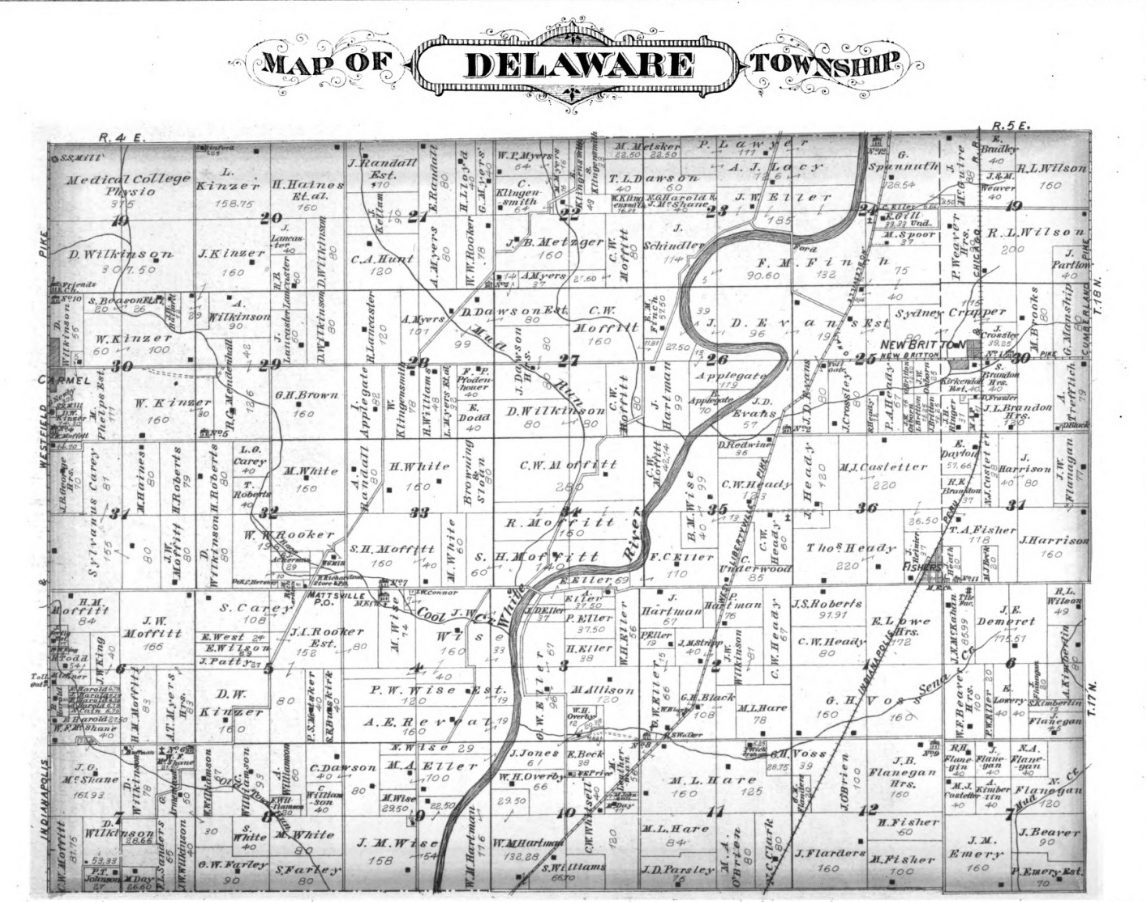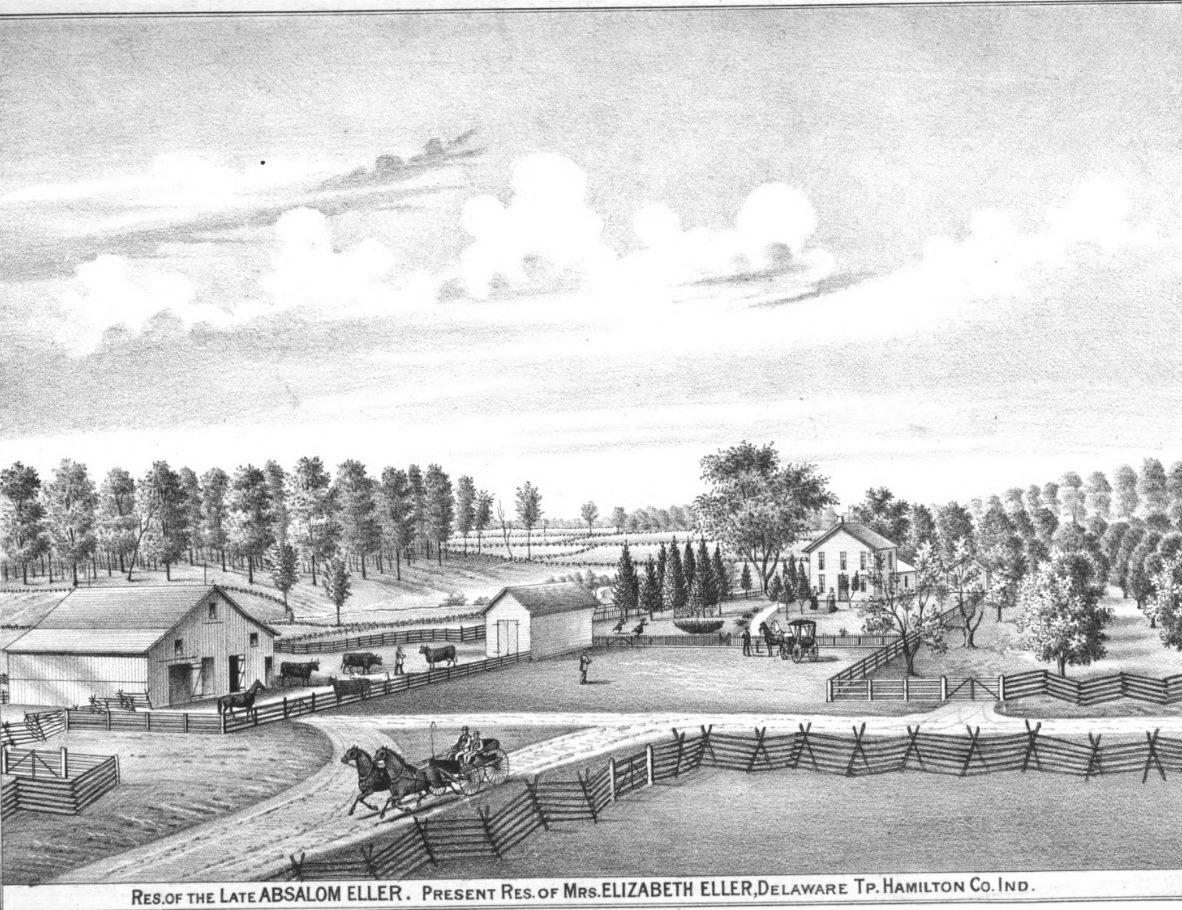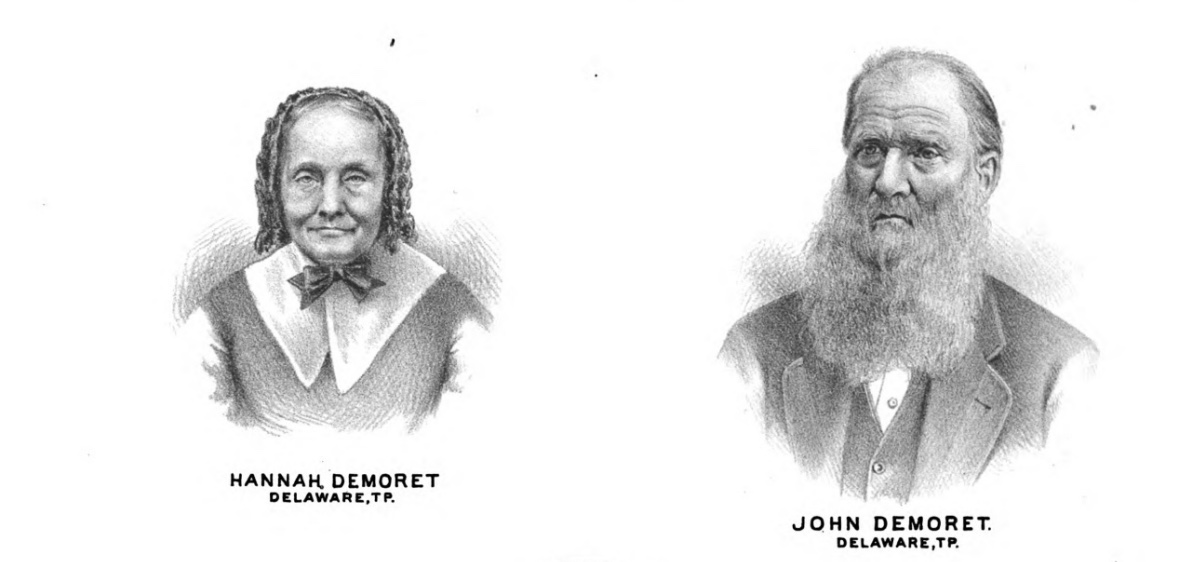This year, as we celebrate Fishers’ Sesquicentennial, we look back on the people and families who were involved in the founding of our city. It is important to remember that the history recounted in this article is only about the colonial settlers. Native American tribes and nations had lived and held influence in these areas for thousands of years before the first white colonists arrived and forced them from their land. To learn more about the Miami American Indiana Tribe that inhabited this area, check out this podcast.

First Families
George Shirts and his family were the first recorded white family to settle in Hamilton County. Specifically, they created permanent residences in what would become Fishers on the future William Conner farm. Shirts brought his family to Hamilton County from Connersville, Indiana, in 1818. Shortly after settling, Shirts moved his family to Noblesville, and the land was purchased by William Conner. A more in-depth review of William Conner and the development of Conner Prairie can be found here.
One of the other first families to settle in the county was the Headys (you might have read about the modern ghost stories surround Heady Hollow in our Fishers Frights series last month). James Heady is said to have been born sometime between 1775 to 1779 in Fayette County, Pennsylvania. James arrived in Hamilton County from Massachusetts around 1823 with his wife Dorothy and their 11 children. James passed away soon after in 1827, leaving Dorothy to raise the children and run their new land. Dorothy took the initiative, purchasing 80 acres and encouraging her children to do the same. Within years, the Heady family owned hundreds of acres across the new Delaware Township.
First Township School
Born in 1789 in Randolph County, North Carolina, Joseph Eller cemented his family as founders of the area. Joseph arrived in Hamilton County in the late 1820s. Along with Abraham Williams, Joseph began the first school in the township. The school was run in a cabin on Mr. William’s property and only taught their children until two years later when the residents built an official schoolhouse. Joseph and his wife, Rachael Casey Eller, had eight children to whom they passed along their property. Joseph died in 1855, but at the time of Fishers Station’s founding, there were at least three Ellers listed in the business directory. The influence of the family can still be seen around Fishers in the naming of Eller Road.

Fishers’ Namesake
As for the man for whom the city is eventually named, little is known about his early life. Salathiel Fisher was born in 1811, likely in North Carolina. He married Mary P. Northam Fisher, born 1812, and the two had five children, Henry Fisher (1835-1898), Emily Catherine Fisher Manship (1840-1912), Thomas A. Fisher (1842-1925), John H. Fisher (1844-1863), and Adella A. Fisher Mock (1850-1924). All of their children were born in North Carolina, meaning the family must have moved to Hamilton County sometime after 1850. In 1866, the first detailed map of the county was created. In it, one can see that 12 acres surrounding the railroad had been bought by Salathiel Fisher. In June 1872, Fisher divided these 12 acres into town lots and got the area platted as Fishers Switch. Unfortunately, Fisher died only a year later, in November of 1873.
Early Entrepreneurs
Two prominent entrepreneurs of Fishers Switch were George Hamilton and W. H. Mock. The two men opened a grist and saw mill in 1873, east of the railroad. Soon after its opening, Mock retired, and Hamilton transitioned the mill into a flour mill. Another early businessman was Wiley Dickson, the owner of a grocery and dry goods store in the town. The store was passed to Goodwin Flannagan, then Jacob Demoret, and eventually to Salathiel’s son, Henry.

In 1874, the first official church was opened in Fishers Station. Reverend D. D. Powell organized the first class of the Methodist Episcopal church. The meetings started out small, with only 14 members utilizing the schoolhouse. The church grew with Reverend Powell remaining in charge for three years.
For other stories about Fishers history, visit ThisisFishers.com/Fishers150.
Cassidy Robertson is a former Community Engagement and PR Intern for the City of Fishers. She enjoys shopping and eating local in downtown Fishers, and in her spare time, she loves working on puzzles and reading a good book. She also enjoys playing with her three dogs and loves watching Fishers continue to develop both as an economic and social hub.

